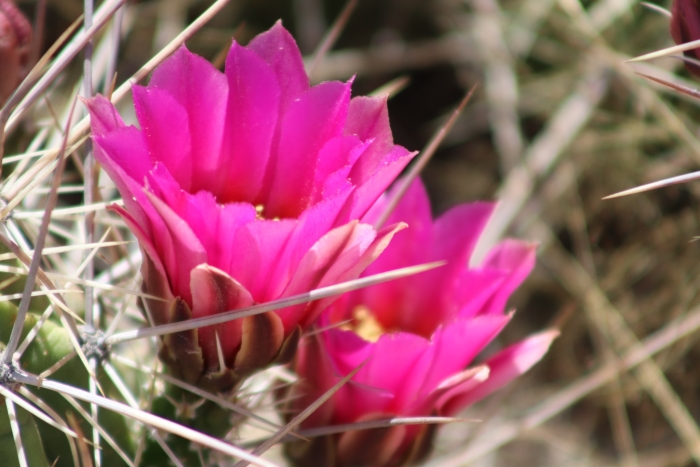Pitaya
(Echinocereus enneacanthus)
Pitaya (Echinocereus enneacanthus)
/
/

Claudio Cantú Muñiz
CC BY 4.0

















































Estimated Native Range
Summary
The Pitaya is valued for its drought tolerance and striking flowers, making it a suitable choice for rock gardens, xeriscaping, and as a container plant for patios or indoor settings. It thrives in full sun and requires minimal watering, adapting well to soils with excellent drainage. While it is low-maintenance, it is susceptible to root rot if overwatered. Gardeners should be cautious of its spines when handling. It is not known to be invasive but should be monitored to prevent unwanted spread in non-native areas.CC BY-SA 4.0
Plant Description
- Plant Type: Succulent
- Height: 1-3 feet
- Width: 0.6-0.8 feet
- Growth Rate: Slow
- Flower Color: Pink, Purple, Red, Yellow
- Flowering Season: Spring, Summer
- Leaf Retention: Evergreen
Growth Requirements
- Sun: Full Sun
- Water: Very Low
- Drainage: Fast
Common Uses
Bee Garden, Bird Garden, Drought Tolerant, Edible*Disclaimer: Easyscape's listed plant edibility is for informational use. Always verify the safety and proper identification of any plant before consumption., Fire Resistant, Hummingbird Garden, Low Maintenance, Rock Garden, Showy Flowers, Street Planting
Natural Habitat
Native to the Chihuahuan Desert and other arid regions in Texas and Northeast Mexico
Other Names
Common Names: Banana Cactus , Prostrate Hedgehog Cactus , Purple Pitaya , Cob Cactus , Strawberry Cactus , Strawberry Hedgehog Cactus , Órgano-Pequeño Alicoche Real , Alicoche , Tuvad Kägelkaktus , Smallspine Pitaya
Scientific Names: Echinocereus enneacanthus , Echinocereus enneacanthus var. enneacanthus , Echinocereus carnosus , Echinocereus enneacanthus var. carnosus , Echinocereus uehri
GBIF Accepted Name: Echinocereus enneacanthus Engelm.